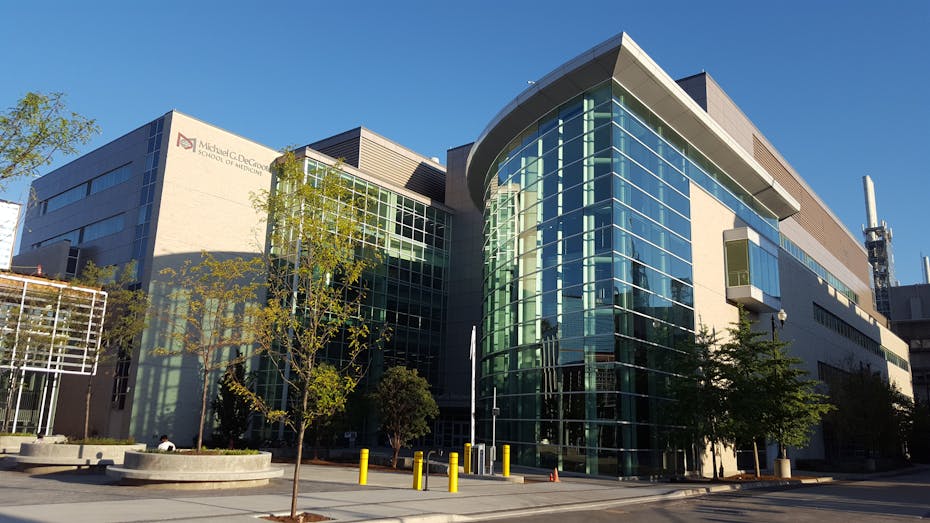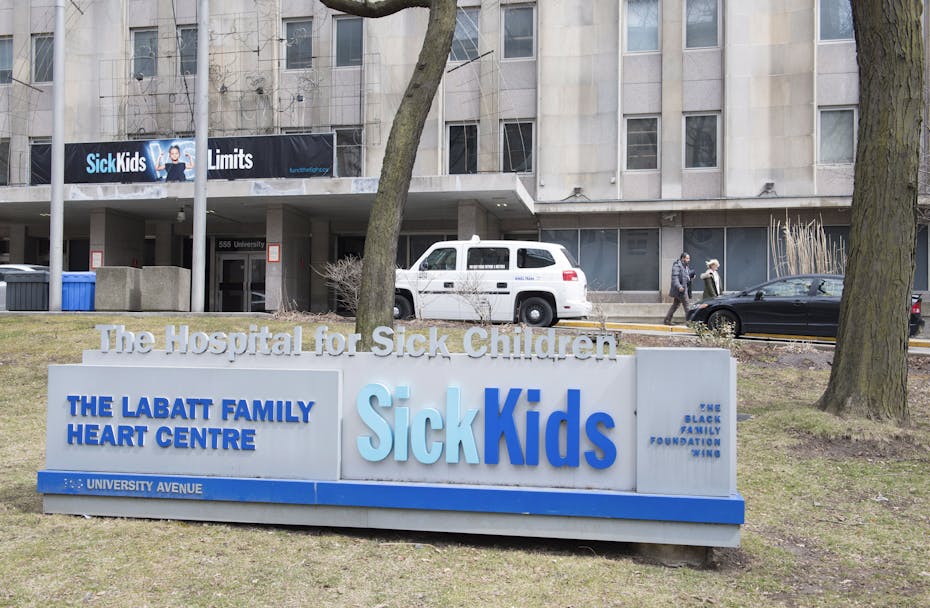
With the September announcement of a record $250-million donation to the University of Toronto’s medical school, renamed the Temerty Faculty of Medicine, three of the six medical schools in Ontario are now named after wealthy donors.
Should we simply celebrate philanthropic donations to medical schools — or hospitals for that matter? There are reasons to look closer. As political scientist Rob Reich of Stanford University notes:
“Philanthropy is an exercise in power …. In a democratic society, wherever we see the exercise of power in a public setting, the first response it deserves isn’t gratitude but scrutiny.”
Public institutions
All 17 universities with faculties of medicine in Canada are public universities — part of Canada’s largely public higher education landscape.
Similarly, Canadian hospitals are almost all public institutions, the result of policy developments that culminated in the the Canada Health Act in 1984.
In Ontario, 145 of 155 hospitals in the province are public hospitals. These institutions are funded by taxpayers’ money and work within the rules set forth by the act prohibiting user fees and mandating public administration.
But defunding of both higher education and health has occurred, in the form of direct cuts and indirectly through stagnant budgets in the face of rising costs and yearly inflation starting in the ‘90s onwards. This defunding has presented institutional administrators with significant financial challenges.
In post-secondary institutions, part of the solution has been to seek and secure private donations from wealthy individuals or corporations.
It is not very different in the public health-care system, where entire hospitals or important parts including health-care programs are also named after wealthy donors.

The root cause for this pervasive and insidious practice is the lack of adequate government funding.
The practice should be challenged for many reasons, including the transparency and democracy of public institutions, institutional independence and equity in education and health-care delivery.
The rightful owners of a public institution are citizens and taxpayers. Although the share of public funding of universities has been slowly eroded, government funds and student fees still make up the largest proportion of revenue together, at 46 per cent and 30 per cent respectively, while private/corporate funds makeup 24 per cent.
Whether a charitable donation to a university or hospital is large enough to cover an entire year’s budget or not, many many more years of funding post-donation are still needed to run these institutions over the long term.
Even according to the logic of business and shareholders, how is it that the smaller contributor/donor (minor shareholder) gets their name on the front door?
How is it that such important decisions are made without transparent or wide consultation with the people that are the soul of these institutions and that make them what they are?
Here, I mean the nurses, physicians, allied health providers and communities of patients in the case of hospitals or faculty members, students and alumni in the case of universities. Where is institutional transparency when deals are announced as fait accompli after they’ve been signed behind closed doors?
Institutional independence
Not uncommonly, large donated funds are earmarked for specific educational, research or health-care services, as requested by the donor, and potentially set priorities for the recipient university or hospital.
In a publicly funded institution, such priorities should be set independently by the institution itself, informed by societal and community needs.
We should be seriously concerned about potential donor influence in institutional decisions, such as selection of leadership positions. The University of Toronto’s law school recently faced criticism after allegations that a donor influenced a hiring decision, prompting the Canadian Association of University Teachers to pass a motion of censure.
More on the scandal-hit U of T law school: A new resignation, a new email from dean Edward Iacobucci to law professors, and internal emails I obtained that appear to contradict some of his assertions. https://t.co/cYMOOHA4eE
— Shree Paradkar 🍁 (@ShreeParadkar) September 18, 2020
Equity in education and health care
Equity in access to health care and education remains a reason to justify public funding.
Many factors clearly influence medical institutions’ ability to garner donations: these include the geographic location of institutions (affluent versus poorer neighbourhoods or cities); how some diseases, often those that have captured mainstream attention and affect the more affluent, can more easily attract donors; or what may be deemed the business relevance or marketability of particular specialities or programs. By extension, philanthropy can impact inequitable service provision.
When a rich family’s name is on a faculty building and new medical students see this as they arrive on campus — especially those who already experience wealth inequities or other structural barriers such as racism — what kind of message do they receive about exactly who’s in power and what their place may be?
Until adequate funding for medical education and health care is restored, public universities and hospitals will continue to struggle financially.
The solution on a more fundamental level must, at least in part, be in the taxation of wealth, as supported by a majority of Canadians, to ensure adequate funds and to level wealth inequity, which is a critical determinant of health, among other inequities.
Meanwhile, if we accept that large private and corporate funding is essential to the very sustenance of these institutions, they must ensure contributions are universal, transparent and regulated.
I propose a number of measures to minimize the detrimental impact of large private and corporate donations:
- Ideally, donations would be anonymous (and no, this does not make large donations impossible), so that brand advancement is not a given with philanthropy. Where this is perceived as impossible, a name on a plaque with the prohibition of any naming of whole institutions or part should suffice.
- Donors should strictly deal with the institution’s foundation department. Any direct contact between faculty, deans and physician leaders should be prohibited.
- Agreements regarding major donations should be made public and presented for binding consultation with institutional stakeholders named above.
- There should be a transparent process of vetting the business practices of major donors on an ethical basis (for example, as related to fair labour practices or how they engage with Indigenous land rights).
- There should be a truly independent body to investigate complaints exposing influence and coercion and to protect whistleblowers.
Scrutiny and strict regulation of corporate funding of public universities and hospitals is essential for maintaining institutional independence and equitable provision of education and health care. Such regulation must be coupled with demands for increased government funding.![]()
Najib Safieddine, Assistant Professor, Department of Surgery, University of Toronto
This article is republished from The Conversation under a Creative Commons license. Read the original article.










